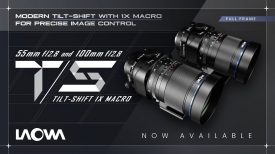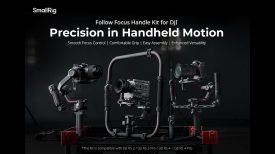Is there one lens that never leaves your camera? Since the advent of larger format Super 35mm sensor video cameras it’s been hard to find a single lens that offers that magic balance of cost, weight, quality and portability. At one end of the spectrum you’ve got repurposed stills lenses, and at the other, cine zooms from companies like Zeiss, Angenieux and Fujinon. The latter have offered the best quality and zoom ranges, but at a significant cost.
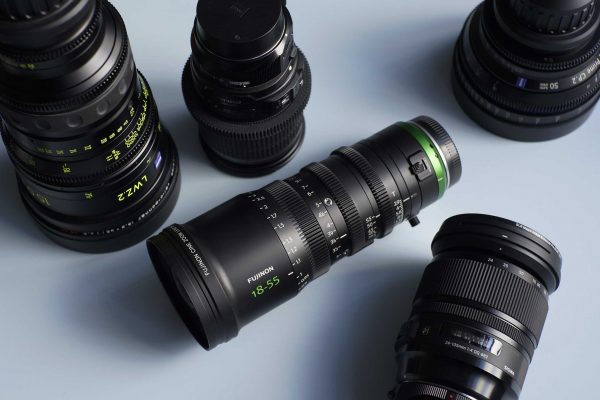
Today Fujinon have announced two new compact, fast, and most importantly, affordable cinema zooms aimed at the owner/operator. The first is the MK18-55mm T2.9 , and the second is the MK50-135mm T2.9. Both lenses weigh in at 980g, both are parfocal, and both have no focus breathing and limited image axis shift when zooming. If you’re a Sony shooter, be prepared to want one.
Dan spent some time with a test unit last week, and you can see the results in the video above.
The lenses have a common 85mm outside diameter and a common 82mm filter diameter. The are also identical in length at 206.3mm and their 0.8 pitch focus, iris and zoom gear rings are all in the same place. This is very smart from Fujinon as they have made changing between the two lenses very easy. Having the exact same weight and physical dimensions means you don’t have to adjust the camera’s balance when going handheld, and if you’re using a matte box or follow focus they can stay in the same position.
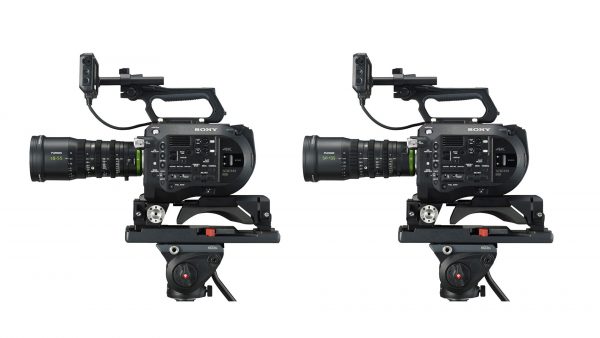
Part of the Fujinon family
According to Fujinon, the new MK lenses inherit the same advanced edge-to-edge optical performance and low distortion found on other Fujinon cinema lenses. They also feature nine iris blades which helps create quite nice bokeh from what I have seen.
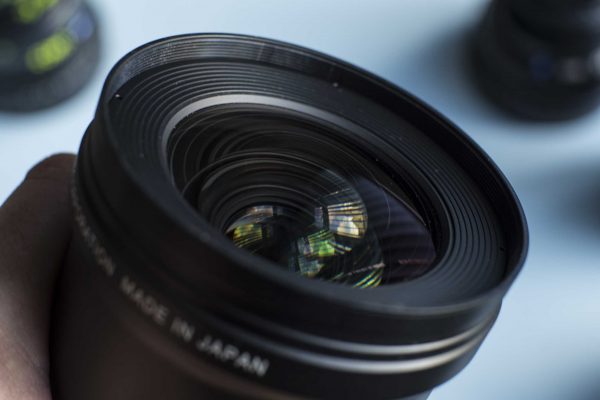
The lenses have also been designed with integrated colour temperatures so they will match with other Fujinon Cine lenses in the HK / ZK / XK series. This is a nice feature if you were for example using a FS7 mounted with one of the MK lenses as a “B” camera and your “A” camera was an F55 running a Cabrio zoom.
Macro, Focus throw, one small catch
Both lenses feature a macro function and a back focus adjustment, which are features usually only found on much more expensive lenses. The focus throw is 200 degrees which is considerably more than most still lenses, but not as much as a lot of other cinema glass.
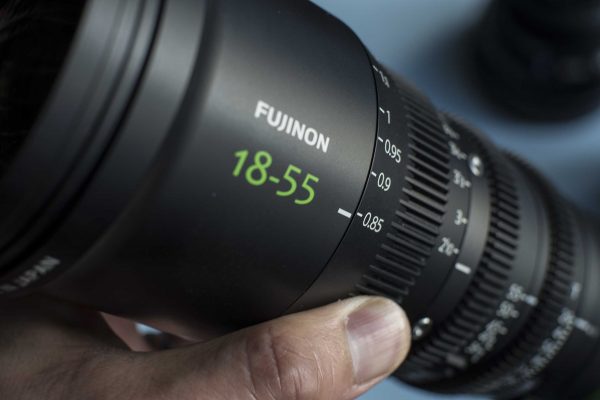
Without engaging the macro the 18-55 has a maximum close focus of only 63cm from the front of the lens. If you engage the macro that figure comes down to 16cm at 18mm and 48cm at 55mm. The 50-135mm has a close focus of 99cm from the front of the lens without engaging the macro and that goes down to 64cm with it engaged and the lens set at 50mm. At 135mm it will focus at 92cm from the lens with the macro engaged.
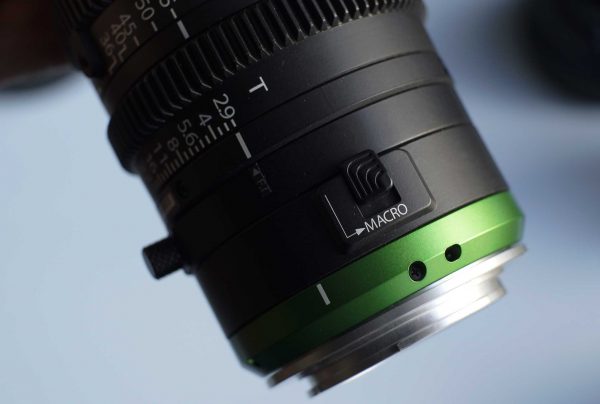
Neither lens has any electronic contact points so you won’t get any distance, T-stop, or focus indicators coming through to your camera. This also means that no auto modes are available.
Now before you get too excited there is one small catch: they will only work on Sony E-mount cameras.
E-mount 4 Life
There are two main reasons why Fujinon decided to only make these lenses available in E-mount. The first is that Fujinon have been conducting research that indicated that quite a lot of all lenses sold in the emerging production market were E-mount, in fact, the amount was second only to Canon’s EF mount. However when they looked at the camera quantity share based on mounts, more than half of all the cameras being sold were using the Sony E-mount. This really is testament to just how popular the Sony FS7, FS5, and Alpha series of mirrorless cameras have become.
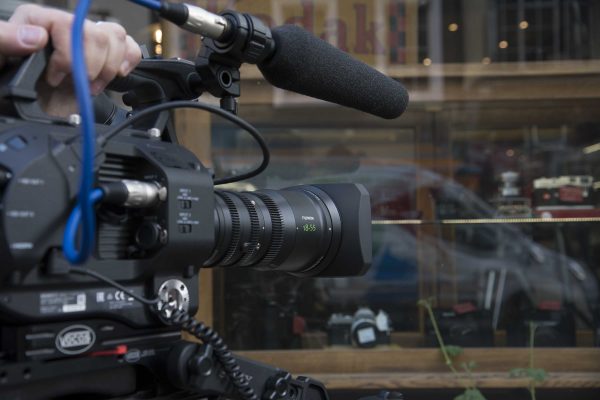
The second reason has to do with the actual E-mount itself. By making the lenses E-mount only, Fujinon have been able to keep the design small and lightweight. The E-mount’s short flange back makes this possible. If they had tried to make the same lens in either PL, EF, or an interchangeable mount the physical size and weight of the lens would have been much larger. Building a constant T2.9 aperture cinema zoom with no breathing, that is parfocal, and weighs less than 1kg is only possible because of the E-mount.
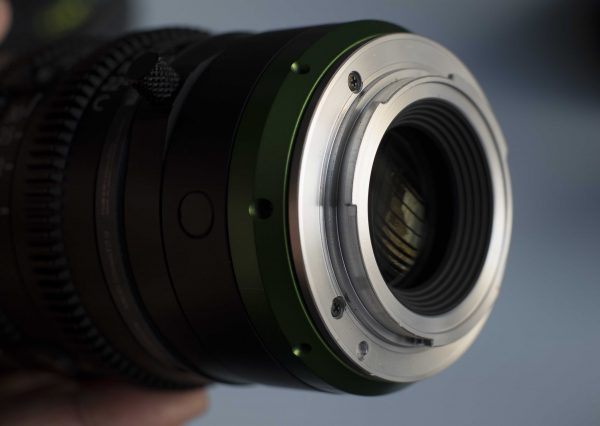
A lot of Sony FS7 and FS5 shooters are using Canon EF glass with an adapter on their cameras. For a lot of these people a proper cinema zoom lens just wasn’t an option given most lenses’ physical weight, size and cost. The negatives of using an EF mount lens with no manual iris control, focus breathing and short focus throw were more than compensated for by their affordability and compact size. With these new Fujinon zooms, there is now a very compelling argument for some shooters to be drawn away from using stills zooms and to move onto a proper cinema zoom lens. While there’s still quite a a gap in price, it isn’t nearly as dramatic as going to something like a Fujinon Cabrio 19-90 or Canon CN7.
Cinema zoom quality in a stills lens sized package
This biggest selling point for the new Fujinon zooms is clearly the weight. With both lenses weighing in at around the same as a Canon 24-70mm plus a Metabones adapter, the argument for choosing a stills zoom based solely on its weight is no longer valid. Yes you can’t get the added benefit of using a Speedbooster to get that ‘full frame look’, but you do get a parfocal lens with no focus breathing, a manual aperture and geared focus, iris and zoom rings. I know which option I’d choose.
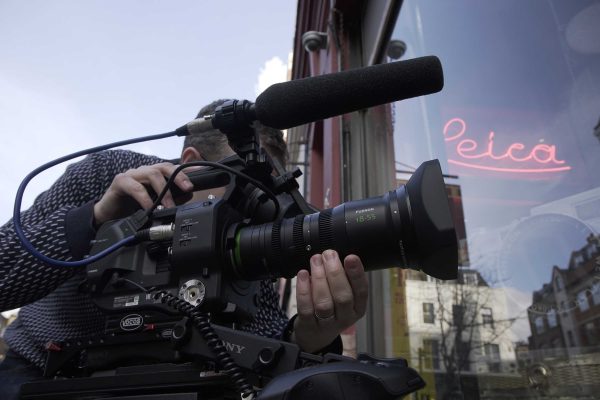
For some shooters, particularly those who are used to using stills lenses, the 200 degree focus throw may still be too much. Performing a big focus throw by hand on a cinema lens, even one with a 200 degree throw, can be difficult. The Fujinon zoom’s physical size does make this easier to do than on most other proper cinema zooms, but it’s still something you should test out before you consider buying the lens.
Stuck with Sony?
The only trouble with the lenses being E-mount only is that you are stuck with using them on a Sony camera. If you happen to own or use a Sony E-mount camera then this is good news for you. If you don’t own or use a Sony E-mount camera then there is no way of adapting these lenses to work on any other camera mount system. These lenses alone are a very compelling reason for people to look at cameras such as the Sony FS7 and FS5.
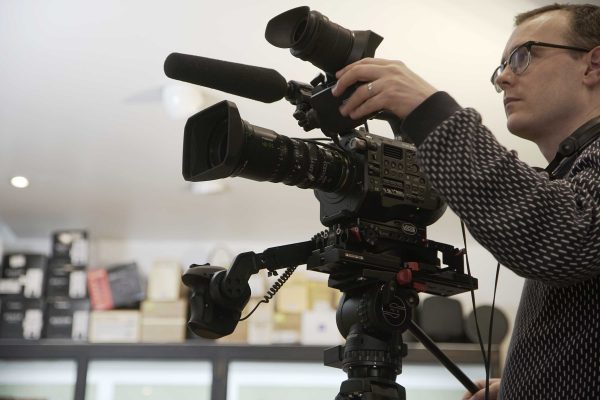
Sony have had all sorts of mounts over the years including the A mount and the FZ mount found on the F3, F5 and F55. It will be very interesting to see if Sony does away with the FZ mount when it eventually announces replacements for the F5 and F55. As you can make much more compact lenses if you stick to E-mount could we see these replacements move to the same locking E-mount system that is found on the FS7 Mark II ? It is very possible, and given Fujinon’s obvious investment and faith in the E-mount system, it is certainly a possibility.
Fujinon have mentioned that they will eventually make both these lenses available in the X Mount used in Fujifilm’s “X Series” of digital cameras, but there are no plans to make them in any other mount.
Compromise is inherent in lens design
Both lenses are a good compromise between weight and range. While they aren’t as fast as Sigma’s 18-35 and 50-100mm cinema zooms, they do have a longer focal range. When you compare the 18-55mm to the Canon 18-80mm the Fujinon is faster but the focal range is shorter. Optical design almost always comes down to compromises. If you want a fast constant aperture zoom with a large focal range the physical size of the lens is going to be huge. If you want to make the lens smaller and lighter then you have to sacrifice both the fast aperture and the focal range. Everybody is after that magic lens that has a constant T2.8 aperture, a 15-200mm range, and only weighs 1kg. Unfortunately the physics of optics makes that impossible currently.
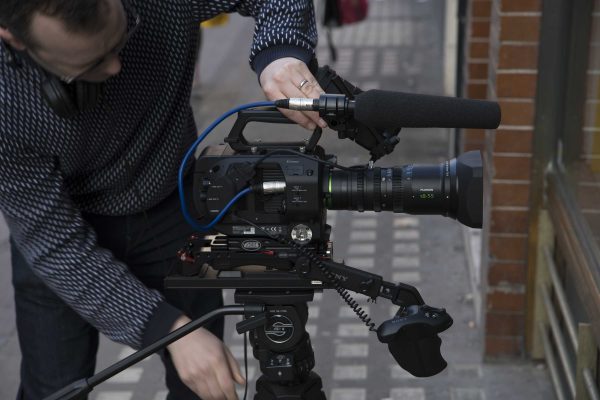
While the lenses may not feature the same build quality as more expensive cinema lenses, they still look to be well made. Fujinon have been able to cut the material costs and make the lens compact and lightweight by adopting what they call “reasonable material for exterior parts”. What this means is that the barrel parts of the lens are made out of a hard plastic: only the gear rings are metal.
Some people may well be disappointed that these lenses only cover Super 35mm and are not full frame. To be fair though, if Fujinon had of tried to make these lenses full frame the physical size and weight of the lens would likely have increased 1.5x. Instead of the lenses being 206.3mm long they would have been closer to 310mm. The front diameter of the lens would also have increased to around 125mm.
The competition and final thoughts
The low weight makes these lenses a very good option for shoulder mounted shooting with the FS7 and FS5. With a length of just over 20cm and a weight under 1kg the lenses will balance very nicely on these camera set ups. The lenses are even lightweight enough that you can handhold them on a Sony Alpha series mirrorless camera.
The only real competition to these lenses when it comes to the weight and size are from Canon’s 18-80mm T4.4 lens and Sony’s own FE 28-135mm f4 G OSS and FE 18-105mm F4 G OSS. lenses. However, in my opinion, none of those lenses are proper cinema zoom lenses.
I think Fujinon have done a fantastic job making affordable and lightweight cinema zooms that a lot of people have been crying out for. Yes they aren’t full frame, and yes they are only E-mount, but they look to offer something no one else has been able to achieve at this price point. If you are a Sony FS7 or FS5 user you are probably going to be rejoicing over this announcement. If you own a Canon C100/300 or even Sony’s F5 you are probably going to be a tad jealous. But at the end of the day this announcement is good for all of us, as it creates competition, and as we all know, competition usually leads to more innovation and lower prices.
Price and Availability
The RRP of the 18-55mm T2.9 in the USA will be $3,799 US and in Europe it will be €3,599 (ex VAT). The lens will start shipping in early March. We’re expecting an announcement about the price of the 50-135mm T2.9 around the time of this year’s NAB show. It won’t be shipping until the summer but we expect it to be a similar price to the 18-55.



